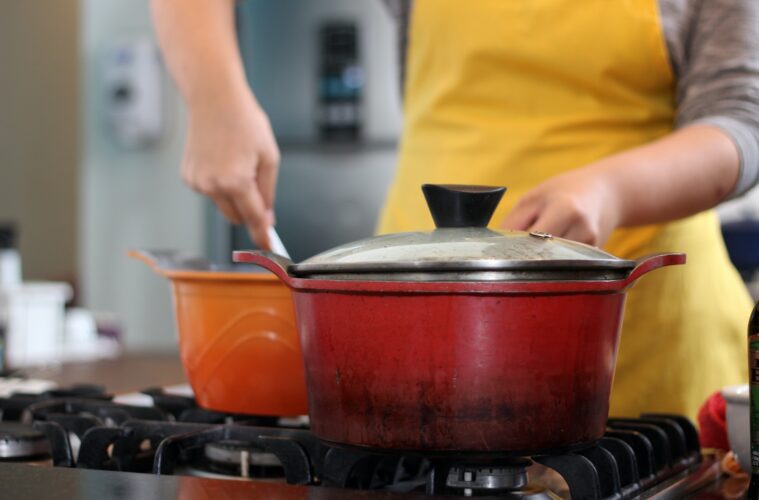Cooking is an art that requires not only skill and creativity but also the right tools. One of the most fundamental tools in any kitchen is the cooking pan. A high-quality pan can significantly impact the outcome of your culinary creations, ensuring that your dishes are cooked to perfection. With a myriad of options available, it’s important to understand the different types of pans and their unique advantages to make an informed decision about which ones to add to your culinary arsenal.
The Versatile All-Stars: Stainless Steel Pans
Stainless steel pans are a staple in many kitchens due to their durability and versatility. They are excellent for tasks that require high heat, such as searing and browning. Stainless steel pans offer even heat distribution, allowing you to achieve consistent results. They’re also non-reactive, meaning you can cook acidic ingredients without worrying about a metallic taste.
When selecting stainless steel pans, look for those with a thick, multi-layered base. This design ensures better heat retention and minimises the risk of hotspots. Keep in mind that stainless steel pans can be prone to food sticking, so it’s recommended to use a small amount of oil or butter to prevent sticking.
Non-Stick Marvels: Non-Stick Pans
Non-stick pans are a boon for those who prefer cooking with minimal oil and easy cleanup. These pans feature a coating that prevents food from sticking, making them ideal for delicate items like eggs, pancakes, and fish. They’re also suitable for low-fat cooking, as you can achieve browning without excessive oil.
When shopping for non-stick pans, invest in those with a high-quality, durable coating that can withstand regular use and gentle care. Avoid using metal utensils, as they can damage the coating over time. While non-stick pans are great for certain tasks, they might not achieve the same level of browning or searing as stainless steel pans.
Traditional Charm: Cast Iron Pans
Cast iron pans are revered for their exceptional heat retention and even heating. These pans develop a natural non-stick surface, called seasoning, over time with proper care. They’re perfect for tasks like frying, searing, and baking, and can easily transition from stovetop to oven.
To maintain your cast iron pan’s seasoning, avoid using soap and opt for gentle scrubbing with hot water. After drying, a light coat of oil will keep it in top condition. While cast iron pans require a bit more maintenance, they reward you with unparalleled durability and versatility.
Mastering the Art of Saute: Sauté Pans
Sauté pans, with their wide, flat bottoms and straight sides, are designed for tasks like sautéing, browning, and simmering. Their larger cooking surface allows for even cooking and better evaporation, making them a favourite for making sauces and one-pot meals.
When selecting a sauté pan, opt for one with a snug-fitting lid and sturdy handles. This will allow you to lock in flavours and easily transfer the pan from stovetop to oven.
Beyond the Basics: Specialised Pans
In addition to the aforementioned types, there’s a plethora of specialised pans that cater to specific cooking needs. Woks are perfect for stir-frying, while grill pans bring the joy of outdoor grilling indoors. Copper pans offer precise temperature control, while enamel-coated pans combine the benefits of cast iron with a colourful, easy-to-clean exterior.
In Conclusion
Choosing the right pans for your kitchen is a journey that involves considering your cooking style, preferences, and the types of dishes you enjoy creating. A well-equipped kitchen should ideally have a variety of pans to cover different cooking techniques and culinary adventures. Whether you opt for the durability of stainless steel, the convenience of non-stick, the tradition of cast iron, or the versatility of specialised pans, investing in high-quality cookware is an investment in the quality of your culinary creations. Remember to care for your pans according to their specific requirements to ensure they serve you well for years to come.

